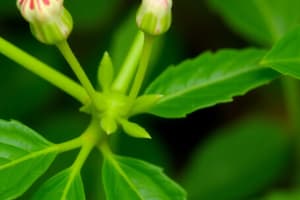Podcast
Questions and Answers
What is the purpose of sexual reproduction in animals?
What is the purpose of sexual reproduction in animals?
To allow for genetic variation and adaptability among offspring.
What is the significance of meiosis in sexual reproduction?
What is the significance of meiosis in sexual reproduction?
Meiosis produces haploid gametes (sperm and eggs).
Describe the role of fertilization in sexual reproduction.
Describe the role of fertilization in sexual reproduction.
Fertilization results in a diploid zygote with a complete set of genetic information.
How do animal life cycles typically end?
How do animal life cycles typically end?
What is metamorphosis, and how does it relate to animal life cycles?
What is metamorphosis, and how does it relate to animal life cycles?
What is puberty and what does it signify in animals?
What is puberty and what does it signify in animals?
Describe the changes that occur during adolescence in mammals.
Describe the changes that occur during adolescence in mammals.
How is adolescence characterized in birds?
How is adolescence characterized in birds?
What changes occur during adolescence in reptiles?
What changes occur during adolescence in reptiles?
Explain the role of the male reproductive system in animals.
Explain the role of the male reproductive system in animals.
Flashcards are hidden until you start studying
Study Notes
Reproduction in Animals and Adolescence
As animals grow from childhood to adulthood, their physical and physiological changes are not limited to size and strength alone; they also encompass the development and maturation of reproductive systems. In this article, we'll explore the processes of sexual reproduction and life cycles, along with the transformations that occur during adolescence in various animal species.
Sexual Reproduction
Sexual reproduction is a fundamental aspect of life on Earth, as it allows for genetic variation and adaptability among offspring. During sexual reproduction, the genetic information from two parents is combined into a single, unique genome that is passed on to their offspring.
In most animals, this process involves meiosis, which produces haploid gametes (sperm and eggs). The fusion of these gametes during fertilization results in a diploid zygote, containing a complete set of genetic information.
Life Cycles
Animal life cycles can vary greatly among species, but they typically involve a series of developmental stages that lead to an adult stage capable of reproduction. The life cycle of animals like mammals, birds, and reptiles usually involves a metamorphosis, during which the young, or juveniles, undergo significant changes in appearance and physiology before reaching sexual maturity. In contrast, animals like fish and amphibians often reproduce in a direct development life cycle, where the young develop from eggs or larvae without a noticeable metamorphosis.
Puberty
Puberty, the period of time when an individual becomes capable of reproduction, typically begins during adolescence in animals. Puberty is characterized by the activation and development of the reproductive system, leading to the production of gametes. In mammals, puberty is marked by the onset of the menstrual cycle in females and the production of sperm in males.
Changes During Adolescence
Adolescence is a critical period of development for animals, during which they undergo significant changes in their reproductive systems, behavior, and overall physiology. Here are some examples of changes that occur during adolescence in various animal species:
-
Mammals: In humans and other mammals, adolescence is marked by the onset of puberty, which results in the development of secondary sexual characteristics and an increase in hormone production.
-
Birds: In birds, adolescence is characterized by an increase in reproductive hormones, leading to the development of sexual features such as bright plumage and elaborate courtship behaviors.
-
Reptiles: In reptiles, adolescence is marked by the onset of puberty, which results in the development of secondary sexual characteristics and an increase in hormone production.
-
Fish and amphibians: In fish and amphibians, adolescence is marked by a transition from juvenile to adult life stages, during which the animals become sexually mature and capable of reproduction.
The Reproductive System
The reproductive system is responsible for the production and transfer of gametes in animals, facilitating sexual reproduction. Although the reproductive systems of different animals vary, they all share the same fundamental components and processes.
-
Male reproductive system: In males, the reproductive system is primarily responsible for producing and transferring sperm. The testes produce sperm, and the penis or other specialized structures facilitate the transfer of sperm during mating.
-
Female reproductive system: In females, the reproductive system is primarily responsible for producing and receiving gametes. The ovaries produce eggs, and the uterus provides a safe environment for fertilized eggs to develop. In some species, such as mammals, the reproductive system also includes mammary glands for the production of milk to nourish offspring.
Conclusion
Reproduction in animals during adolescence is a complex process involving the development of reproductive systems, life cycles, and behavioral changes. Understanding these processes is essential for biologists, conservationists, and those interested in the natural world. By exploring the intricacies of reproduction in animals, we can gain a deeper appreciation for the diverse and fascinating ways in which life on Earth continues to thrive and evolve.
Studying That Suits You
Use AI to generate personalized quizzes and flashcards to suit your learning preferences.




